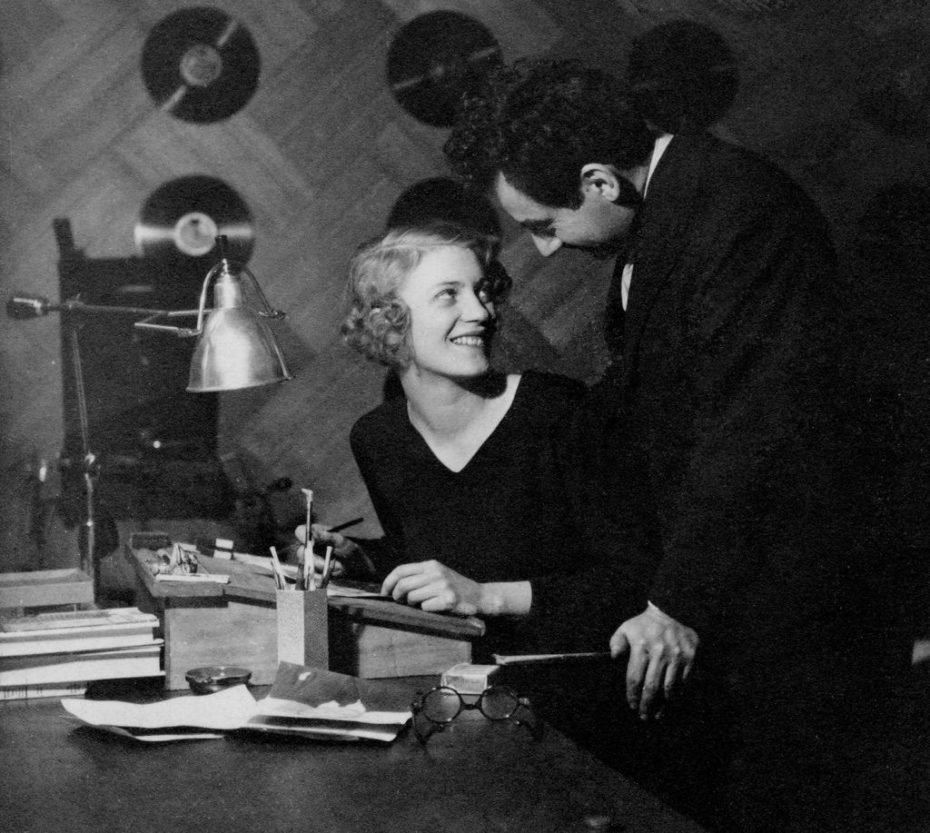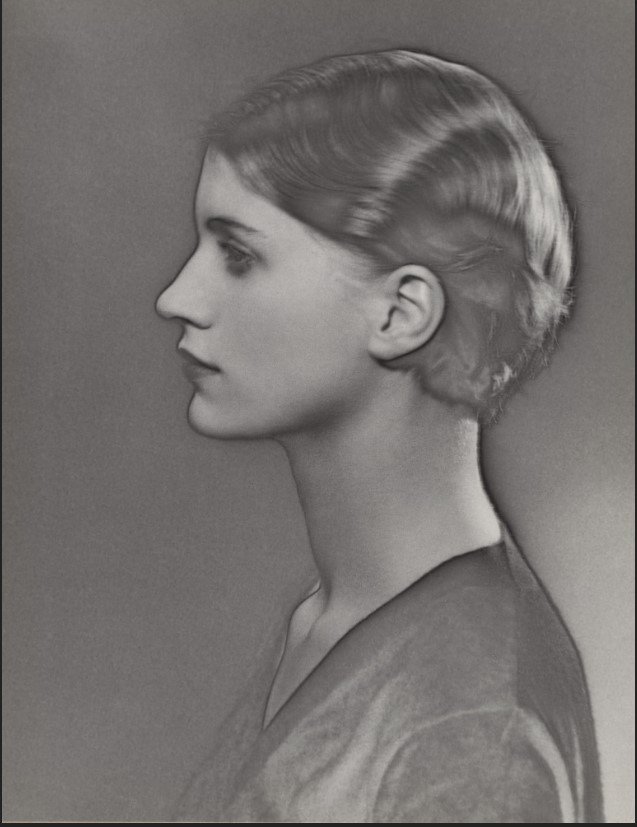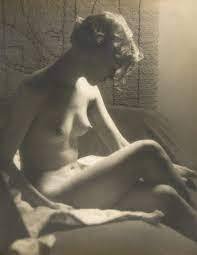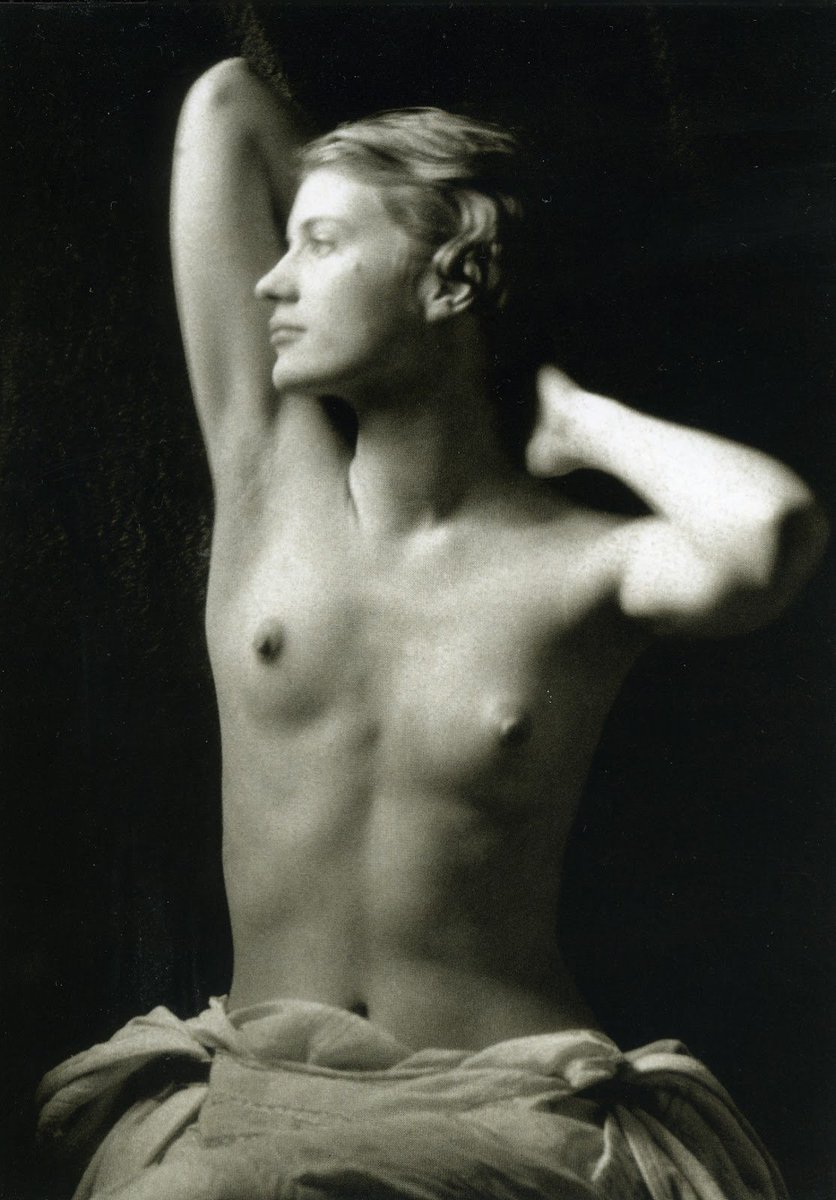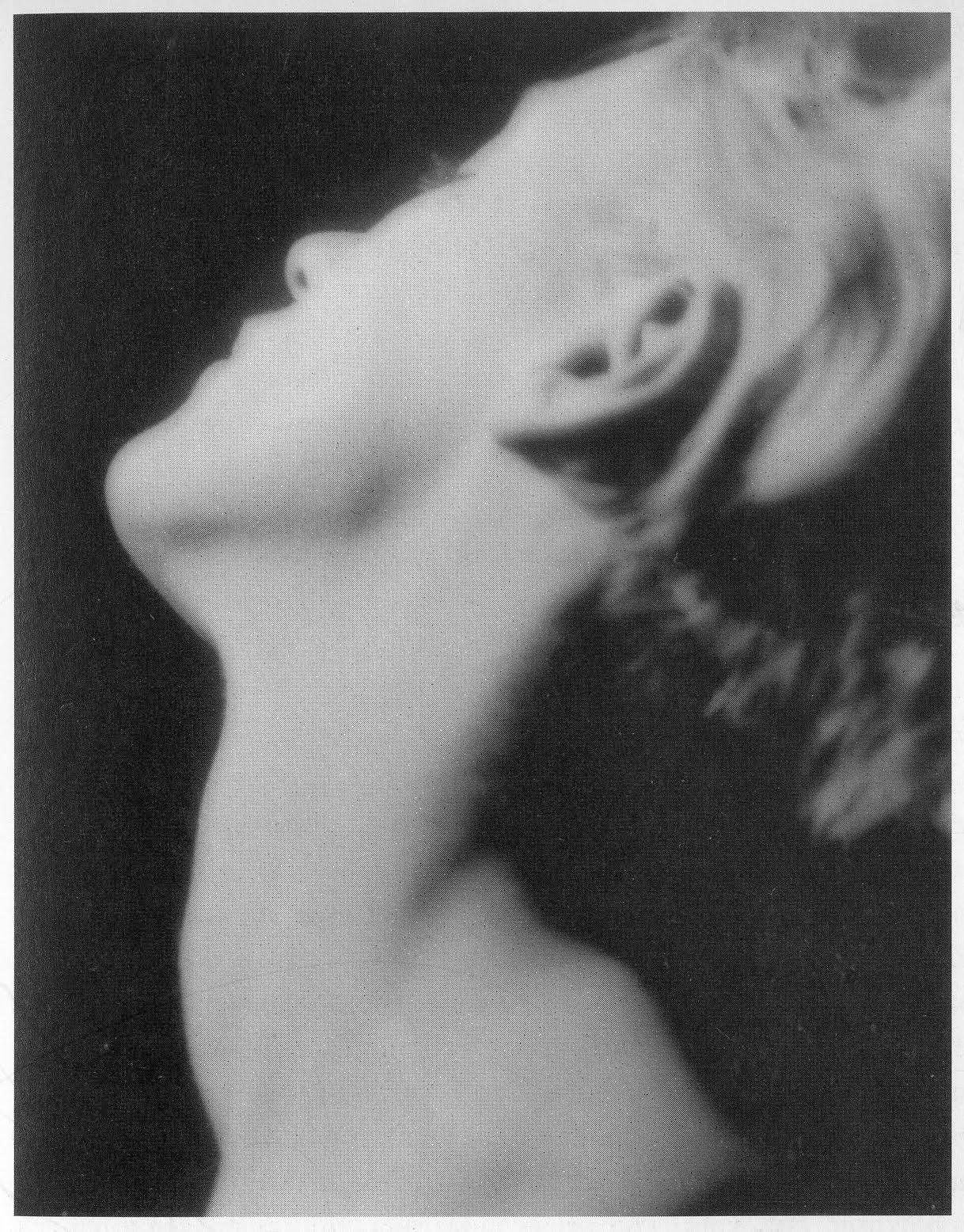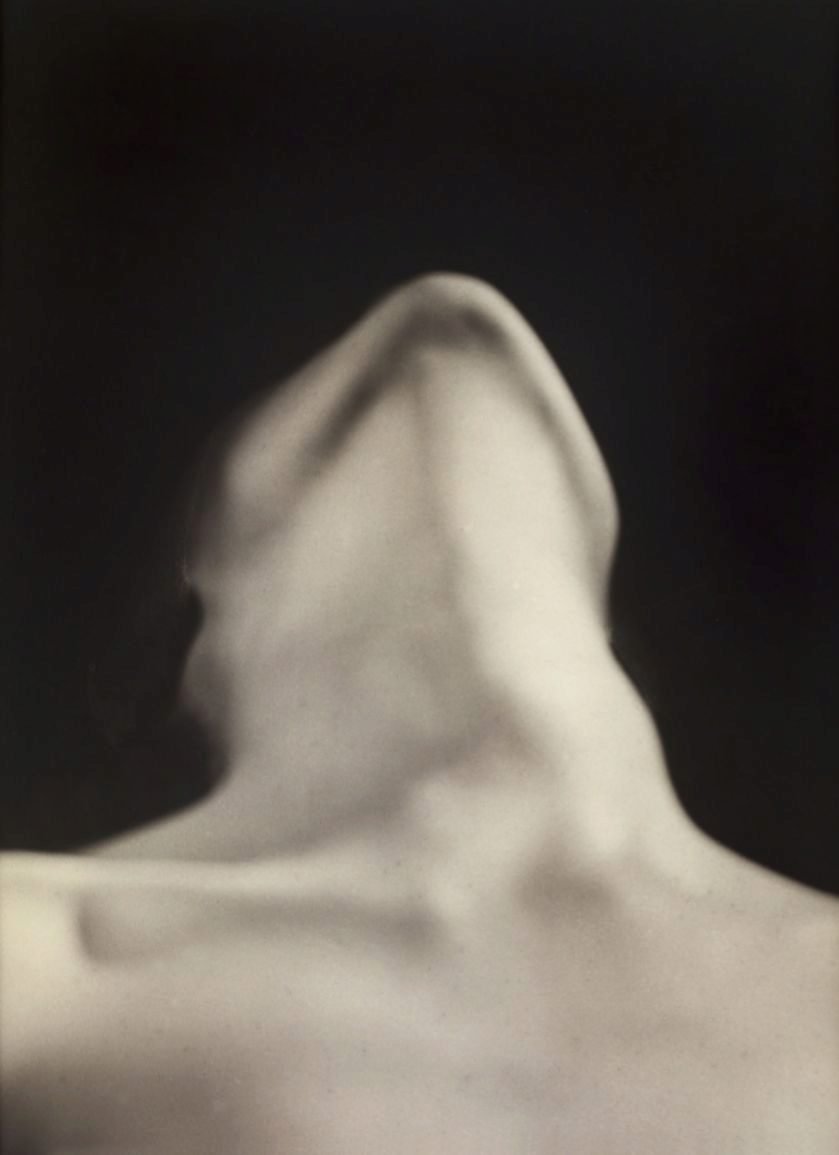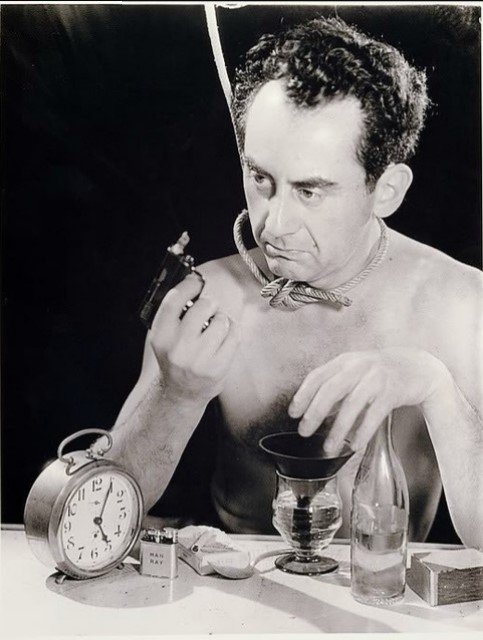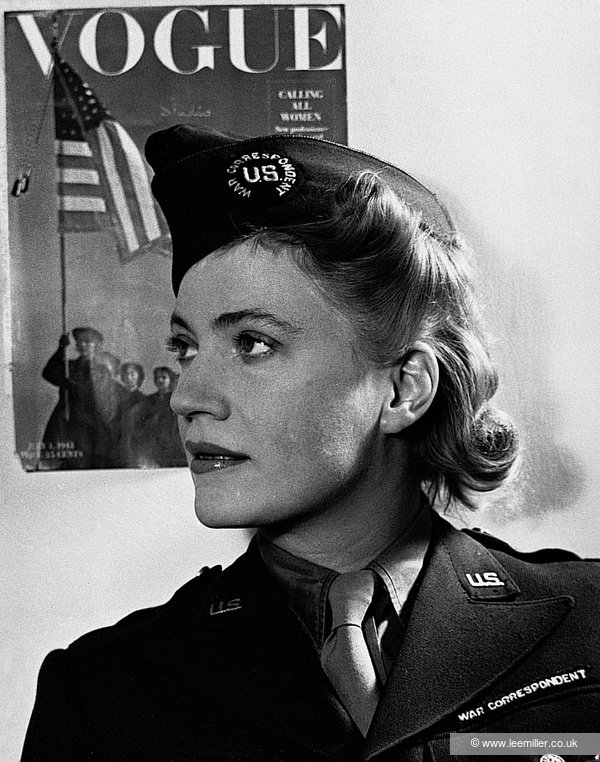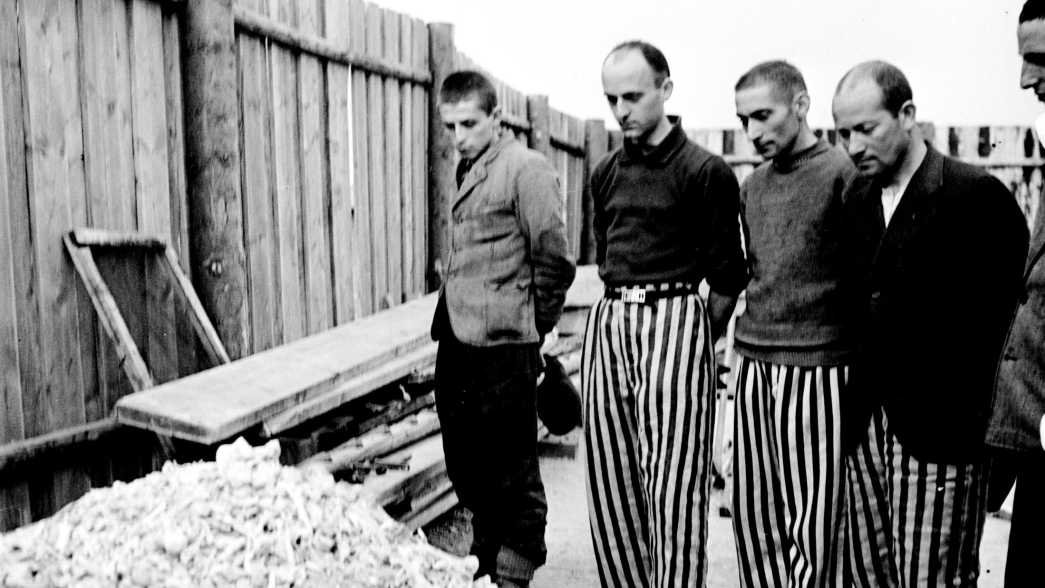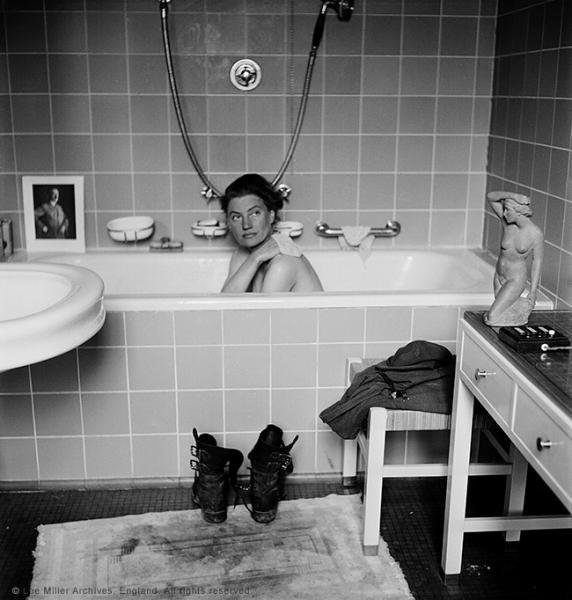Episode #113: Modern Love--Man Ray and Lee Miller
Listeners, I heard you—a bunch of self-admitting hopeless romantics who wanted to hear more about people bound by attraction, fascination. By love. Though there are examples of romantic and sexual relationships between creators that are sprinkled throughout art history as we know it, it’s true that we have the most information about relationships from folks who lived in the last century—because we have greater access to documentation recording the lives of these people, and because, as the 20th century progressed, people—artists, perhaps especially—became more vocal about their relationships, less inhibited. Modern artists, artists especially from the first half of the 20th century, lived their art, and their relationships, out loud-- writing about them, talking about them, and sometimes even creating works of art about them.
This season, I’m rounding up stories about modern artists in love, in lust, in relationships— digging into these individuals, see how their liaisons, marriages, affairs, and connections played in or on their respective works of art, and how, if anything, they affected art history as we know it. I, for one, believe that it’s time for Modern Love.
Today: we’re homing in on the early years of Lee Miller, model and photographer, and her years spent with surrealist Man Ray.
Please SUBSCRIBE and REVIEW our show on Apple Podcasts and FOLLOW on Spotify
SPONSORS:
Lume Deodorant: Control Body Odor ANYWHERE with @lumedeodorant and get over 40% off your starter pack with promo code ARTCURIOUS at lumedeodorant.com/ARTCURIOUS! #lumepod
Yale University Press: Buy The Art of Colour by Kelly Grovier now
To advertise on our podcast, please reach out to sales@advertisecast.com or visit https://www.advertisecast.com/ArtCuriousPodcast
Episode Credits:
Research by Ann Catherine Hughes. Production and Editing by Kaboonki. Theme music by Alex Davis. Additional music by Storyblocks. Logo by Vaulted.co.
ArtCurious is sponsored by Anchorlight, an interdisciplinary creative space, founded with the intent of fostering artists, designers, and craftspeople at varying stages of their development. Home to artist studios, residency opportunities, and exhibition space Anchorlight encourages mentorship and the cross-pollination of skills among creatives in the Triangle.
Recommended Reading
Please note that ArtCurious is a participant in the Bookshop.org Affiliate Program, an affiliate advertising program designed to provide a means for sites to earn advertising fees by advertising and linking to bookshop.org. This is all done at no cost to you, and serves as a means to help our show and independent bookstores. Click on the list below and thank you for your purchases!
Episode Transcript
If you love ArtCurious, help us keep it going! Become a supporter at patreon.com/artcurious for as little as $4 a month.
Imagine this. A beautiful young woman, still in her late teens, stands on a street corner in New York City. Something catches her eye as she waits to cross the busy intersection. And I could be anything—a passing bird, the glare off a car’s windshield, the bright coat of a commuter passing nearby. As she steps into the crosswalk, she’s thus a little distracted, and not aware of her impending doom. A car barrels down the road, screeching to a halt—and barely misses our heroine, thanks to a quick save by a behatted man, who pulls her out of the way at the last minute. The man is momentarily struck dumb—not only by the near-disaster that he has helped the woman avoid, but also: gosh, she’s just so beautiful.
Believe it or not, this isn’t a rom-com, or the setup to a romance novel, though it reads like both. And it’s not fiction, either. It’s actually a real story—the story of one of America’s most interesting photographers and photojournalists, a woman who contained multitudes and, for a brief moment, was part of a creative and torturous partnership with a fellow American artist in the heady days of the late 1920s and the early 1930s.
Some people think that visual art is dry, boring, lifeless. But the stories behind those paintings, sculptures, drawings, and photographs are weirder, more outrageous, or more fun than you can imagine. ArtCurious Season 13 is all about Modern Love, and today we’re homing in on the early years of Lee Miller, model and photographer, and her years spent with surrealist Man Ray. This is the ArtCurious Podcast, exploring the unexpected, the slightly odd, and the strangely wonderful in Art History. I'm Jennifer Dasal.
Lee Miller did indeed have a brush with death in New York at the age of 19, but it wasn’t Man Ray or any other romantic suitors who saved her life that day in 1926. But it was someone who would legitimately change her life. Lee Miller’s behatted hero was none other than the businessman and magazine magnate, Condé Nast. Nast was the owner of high-fashion magazines like Vogue and Vanity Fair, the founder of the media company that bears his name, even today. And when he saw Elizabeth Miller, called “Lee” by her friends, he was indeed struck by her classic beauty—and he knew that she would make an excellent model.
Lee Miller was born in 1907 in Poughkeepsie, New York, and her early years were not the easiest. She was in and out of school, frequently expelled from institutions, especially once she grew older, and was once described as, quote, “an idle student and an active rebel.” Unquote. At first blush, this description is the kind that usually makes me smile—an active rebel girl? Yes please. But her emotional disruptions and behavioral issues might have stemmed from some major trauma. When she was just seven years old, she was raped by a family friend, who infected her with gonorrhea. This was in the 19-teens, so the pre-penicillin era, and treatment for gonorrhea was thus not the easiest thing to clear up. She was forced to undergo weekly vaccinations, and, some say, weekly douches. She was seven. Seven. The rape was horrific enough, but being forced to undergo these medical interventions wasn’t great either. On top of this, her father—who did seem to be a loving one, I think? It’s hard to tell—liked to noodle around with photography, and often asked Lee, his only daughter, to model for him. And sometimes, he’d ask her to do so in the nude. This was a practice father and daughter would continue into her late teen years. So it makes sense to me, in multiple ways, that she’d want to get outta town as quickly as possible. She left Poughkeepsie for a year in Paris, which she spent studying lighting and costume design before returning to New York, this time settling in the city and enrolling at age 19 at the famed Art Students League to study life drawing and painting. But her discovery at the hands of Condé Nast set her on a different path as she became a fashion model—but don’t worry, she’d eventually find her way back to becoming an artist in her own right.
Lee Miller was a great model, and she became highly sought after by photographers, both in art and high fashion, or, in the case of folks like Edward Steichen, someone who bounced between both worlds. Because of her time as her father’s artistic model, Miller was very comfortable in front of the camera, but she felt curious, too, about what it was like to operate the camera, too, to be behind the lens. And when Steichen introduced her to the work of the American artist Man Ray, she felt something shift for her. That—that right there, that’s the stuff, that’s what she wanted to do. Photography, artistically done, telling a story. Coincidentally, the burgeoning of her interest in photography coincided with the use of her photograph in an ad for the feminine product company Kotex, which led to difficulties finding further work in high fashion. So Lee Miller knew that she was ready to make a big change, and she was ready to head to Paris to attain her goals.
Man Ray had been doing rather well for himself in the Parisian art world—especially in photography—in the 1920s. We’ve spoken on a previous episode of ArtCurious about the man born Emmanuel Radnitsky, but we focused primarily on his work both before and after his time in Paris. Today we get to rectify that a little bit. In 1921, thrilled by the work of the European Avant-Garde, Man Ray, as he called himself, moved to Paris, reveling in the early days of the Surrealist movement, and befriending Left Bank bigwigs like James Joyce, Gertrude Stein, Jean Cocteau, André Breton, and Man Ray’s future lover and muse, the irrepressible Kiki de Montparnasse. Ray’s Paris years—the phase of his career from 1921 through 1940--were a hugely exciting time of innovation and experimentation. He played with the formal techniques of photography, even pioneering a type of photograph called a “rayograph”—named after himself, of course—that didn’t use a camera at all, but were made when everyday objects were simply laid across photosensitive paper. Ray’s photographs could blur the boundaries between representational and abstract, sometimes appearing rather dreamlike, which made them very on-trend with the surrealists at the time. He was a groundbreaker with massive connections in the arts communities across two continents. And Lee Miller noticed. So in 1929, she decided it was time to move back to Paris, this time driven by two goals: one, to become a professional photographer, and two, to work as an apprentice to Man Ray himself.
Not that these were easily attainable goals. The story goes that Lee Miller popped by one day to Ray’s Paris studio, hoping to introduce herself, only to be informed by the building’s concierge that the artist had recently departed for the glitzy town of Biarritz for the summer. That had been her big chance, her big moment—and she had just missed it. But it was only a momentary disappointment, because if this story has taught us anything thus far, it’s that fate smiled on Lee Miller, because when she opted to go straight to a nearby bar, who would end up appearing at that same establishment? Strangely enough, it was indeed Man Ray, who had not—yet—gone to Biarritz. Miller was thrilled, and jumped up immediately from her seat, introducing herself—“I am Lee Miller,” she said, “I am your new student.”
Man Ray was confused, but also intrigued. “No, you’re wrong,” he told her, “I’m not accepting students right now, and anyway, I’m leaving for Biarritz.” But Miller had just felt like her future had nearly slipped away from her, and she wasn’t going to do that again. So she said one thing: then I’m going to go to Biarritz with you.” And Ray, to his credit, assented. It was a life-changing moment, and that summer, Lee Miller and Man Ray fell madly in love.
And that is coming up next--right after this quick ad break—remember that you can join us over on Patreon for a few bucks a month and get this show ad-free: patreon.com/artcurious.
Welcome back to ArtCurious.
In the three years that Lee Miller and Man Ray were together—from 1929 to 1932—not only did the artists fall deeply in love, but they also began a partnership that sparked collaboration and learning opportunities. Miller not only became Ray’s model, lover, and muse, but also his most committed student. And as it turned out, Miller was a fast learner, taking photography as naturally as possible, finding its minutiae to be fascinating challenges rather than frustrating roadblocks. She quickly became as proficient as Ray in the darkroom, and together they forged some noteworthy artistic achievements. One of their best-known activities was the development of their so-called “solarization” technique, wherein a photograph is rendered partially as a negative and as a positive—so that sometimes light areas appear dark, and vice versa, typically because of the handling of light during the negative’s development. Though this photographic effect had been known since photography’s early years in the 19th century, it was often thought of as a fluke, an accident, and indeed, Man Ray himself had first become entranced by solarization when he saw a work by the photographer Alfred Stieglitz that Stieglitz had discarded as a failed or ruined image. At the time, though, it had not occurred to Ray that this technique could be harnessed deliberately. That wouldn’t happen until the intervention of Lee Miller, and a happy darkroom accident. While developing some of her negatives one day, Miller was startled by a creature suddenly crawling over her foot—whether it be a spider or rat, or more, I’m not sure, and perhaps Miller didn’t know, either. Regardless, she was shocked into turning on the darkroom light without thinking about it, thereby suddenly exposing the film she had been in the process of developing--a dozen negatives of a nude against a black backdrop. Attempting to come to her rescue, Man Ray barged in, attempting to save Lee’s works by immersing the film in a fixative—but things didn’t go as planned. They were even better than they had hoped.
The unexposed parts of the negative, the black background, had been exposed to the sharp light and had developed and came right up to the edge of the white nude body. It looked cool, and both Lee Miller and Man Ray loved the look of it.
Though Miller ultimately gave the credit for the accidental discovery of solarization to Ray, it's important to know that she was there, through it all, and that without her own experimentations and photographic processes, the technique would not have gained significant traction. Later in her life, Miller said, quote, “Man had to set about how to control it and make it come out exactly the way he wanted to each time. There were many people later on who copied [the solarization process], but they never seemed to handle it with the authority that Man did.” Unquote. To his credit, Man Ray dismissed this notion. He saw the discovery as no more than the studied application of a phenomenon—specifically, the action of light on silver bromide-- that had been known for thirty years. Still, this solarization technique would become the hallmark of their collaboration, a special aesthetic mark that would forever be linked to the two of them.
While collaborating behind the lens on works that featured solarization and other technologies, Miller and Ray also collaborated on opposite sides of the lens, too. Miller, well-practiced as a model, sat for Ray’s photographs, like Lee Miller Nude with Sunray Lamp, from 1929. In Ray’s hands, Miller comes across as sensual and alluring, a beauty who is equal parts beguiling and vulnerable. Seated in profile in the shadows, her legs crossed and her gaze downcast, Miller appears pensive, wishing to avoid the viewer’s or perhaps Man Ray’s, gaze. And this might be seen by some as understandable, given that Ray’s focus is not on Miller’s face, really, but her body—the stark light from that titular Sunray lamp barrels down, highlighting her breasts, stomach, and thighs. To Ray, Miller is the epitome of the object of desire.
But Miller wasn’t just Man Ray’s muse—she was her own, too. And even when the artists both riffed on the same general subject manner, it’s fascinating to see how different Miller’s own takes are. In her own nude self-portraits, like a gorgeous one from 1930—which you can see on my website, artcuriouspodcast.com, Miller portrayed herself as confident and formidable. Bathed in a bright light, her arms stretched up and behind her neck, Miller’s head is turned and her gaze is directed firmly to her right. Though she is seen partially nude, revealing her bare torso to the viewer, there’s no shyness, nor embarrassment, nor even a hint of provocation. More than anything, it’s strength that radiates through this work, a woman presenting herself as capable, self-assured, and worthy of admiration as a person and artist, not just as a beautiful woman.
The strength that Lee Miller showed so evidently in her photographs was evident, too, in her personality. As we can tell from her assured meeting with Man Ray in 1929, when she thrust herself upon him as a student, she was no wallflower. She was independent, courageous, unafraid to go after whatever it was that caught her fancy, whether it be a new career or a new relationship. So even though Miller loved Man Ray, she didn’t allow her relationship with him to prevent her from engaging in sexual relationships with other men. This, honestly, was very much in line with surrealist thinking, the kind of philosophies that were in the air in the aesthetic and cultural communities surrounding the couple in Paris in the late twenties and early thirties. Surrealists demanded free love—a loose, inhibited kind of connection that they termed “l’amour fou,” or “crazy love,” the kind where sex was spontaneous and welcomed, and not resented or prevented by anyone’s committed partner. The catch, though, was that this was a philosophy that was deemed acceptable for men but didn’t necessarily extend equally to women. So Man Ray, for example, could pursue extracurricular sexual activities, but Lee Miller? Not necessarily.
Quite understandably, Miller loathed these double standards and had no intention of following these rules, however loosely or strictly set by her own partner and their social circle. Instead, Lee Miller went to bed with whomever she chose, and Ray found himself unable to follow his own tenet of letting go of jealousy and resentment. Soon, their lives began resembling little passive-aggressive vignettes, with Miller enjoying the attentions of other men, and Ray giving her the cold shoulder.
Ultimately, Miller and Ray’s relationship wasn’t only plagued by jealousy in their romantic and sexual lives, but it seeped into their professional ones, too, especially as Miller came into her own as a talented photographer. One notable instance highlights their separate claims on their collaborative pieces and the violence lurking behind those collaborations. In 1930, Ray occupied himself by photographing Miller’s head and neck for a series he called Anatomies. He captured Miller’s neck from a low angle and in soft focus, with her vulnerable throat the center of attention. Truly, this is a stunning work from a stunning series, but Man Ray just wasn’t feeling it that day, so he threw away the negative. Miller, though, loved it—and she fished it out of the trash, and proceeded to develop her own print from that negative, taking her time during the development process to ensure the final product would meet her exacting standards. The finished work was beautiful. Man Ray was impressed—but that satisfied feeling didn’t last long, because both artists claimed the piece as their own. Their fight was a ferocious one, a true barn-burner that ended only when Ray ejected Miller from the studio. Upon Miller’s eventual return to the space, she entered only to find that the photograph—the one she developed, the cause of the fight—had been pinned to the wall. The photo, right at the neck, had been slashed with a razor blade, and red ink poured from the paper cut, giving the appearance of a deep and bloody wound. Yikes.
The more independent Lee Miller became, the more Man Ray tried to pull her closer and closer, not with love, but with threats. He appeared to love her spirit and was certainly drawn throughout his life to women with strong personalities, but he couldn’t tolerate disloyalty or, really, autonomy in most of his partners, and Lee Miller was no exception. The threats escalated to emotional pleading, as when Miller met her lover Aziz Bey—who would eventually become her first husband—and Man Ray begged her to stay with him instead of meeting up with Aziz. The begging, then, further morphed into threats of violence. He owned a pistol, and rumor has it that he would traipse around Montparnasse, bragging that he just might use it on Miller if she pushed him too far.
For Miller, this was too far. And thus, in 1932, she left, returning to New York to open her own photography studio. Man Ray didn’t learn that she had planned to leave Paris until he arrived at her apartment one night and found the windows dark, her home uninhabited. Lee Miller was gone.
We’ll continue our story—right after another quick break. Come right back.
Welcome back to ArtCurious.
Lee Miller might have left Man Ray in 1932, but her specter haunted his work for much longer. Very quickly after Miller’s departure from his life, Ray staged a series of photos presenting himself in a mock-suicide attempt, a grim, strange set of images portraying a seated, shirtless Ray, sitting at a table with a noose loosely roped around his neck, holding a gun into which he’s stubbed an ashy cigarette. A glass bottle and a few other odd bits of paraphernalia are said to hint at a potential poisoning to come. It’s dark, to be sure. But it is just one image that matches how devastated Ray felt at his lover’s disappearance. That devastation morphed into anger, again with that hint at violence there in the background, when Ray opted to revisit one of his most famous pieces: a work originally created in 1923 and titled Object to be Destroyed. That work is comprised of a metronome upon whose swinging arm Ray attached a black-and-white photograph of an eye. In the updated version, he made a couple of key changes that attest to his anger. First, he wrote instructions regarding the object’s use, saying, quote: “Cut out the eye from a photograph of one who has been loved but is seen no more. Attach the eye to the pendulum of a metronome and regulate the weight to suit the tempo desired. Keep doing to the limit of endurance. With a hammer well-aimed, try to destroy the whole at a single blow.” Unquote. And yes, he followed his own instructions, attaching an image of Lee Miller’s eye in his new, updated version.
For her part, Lee Miller did go on to establish herself and her career back in New York City, hitting the height of her career around and after World War II. She married and divorced Aziz Bey before opting to return to Paris in 1937, where she met Roland Penrose, a British artist and historian also known within surrealist circles. Eventually, the two fell in love and married a decade later, in 1947. Their son, Antony, was born that year.
But let’s back up a little bit, to those early days of World War II, because that’s where Lee Miller’s career gets really interesting. 1939, at the outbreak of the war, found Lee Miller in London. Though the U.S. Embassy there urged her to return to the United States, she wasn’t interested, committed as she was to several projects in England at the time. This meant that as the war progressed, she was there, turning her lens not only on the fashion world, but at the center of an increasingly battered London during the Blitz and beyond. In these key years, Miller morphed from being viewed not only as a glossy high-fashion photographer, but a photojournalist—a change that surprised some, potentially even including Miller herself. In 1942, on the advice of her friend, the Time/Life photographer David E. Scherman, she applied for accreditation as a war correspondent for Vogue, requesting access to sites connected with the U.S. Army. Upon approval, Miller gained access to military bases to photograph the many women actively assisting the Allied war efforts, whether as army nurses, searchlight battery teams, or as members of the Women’s Royal Navy Service (a British service colloquially abbreviated as the WRENS). Miller, a female photographer capturing life during the war, made other women a primary focus, at a time when women were seen as accessories, or auxiliaries to fighting the world war, not actively doing so themselves. And it changed her.
What might have affected her most, though, was when she moved away from Britain and began photographing mainland Europe, again alongside David Scherman. The more the war progressed through its horrifying final years, the more Lee Miller saw, and the more she photographed for readers back home and for posterity. She witnessed the horrors of Nazi rule, including the liberation of the concentration camps Buchenwald and Dachau. She photographed skeletal prisoners and the dead in gas chambers. And she never, ever forgot them. According to her son Antony, her time as a war correspondent haunted her, but no more so than the visits to Buchenwald and Dachau. As Antony Penrose later recalled, quote, “For her the horror of the camps was deeply personal. She gazed into the eyes of dead prisoners searching for one of the many Jews she knew in Paris before they disappeared during the war.” Lee Miller, then, was looking for her friends, and she brought along readers of Vogue along in her heart-wrenching and unflinching search. But even then, Lee Miller had to do some convincing. Writing a telegram to her editors at Vogue, she sent along her photos of the concentration camps, begging in all caps, quote, “I IMPLORE YOU TO BELIEVE THIS IS TRUE,” a clarion call for the publication to featuring horrific pictures of corpses as evidence of the existence of the death camps, which some Americans had chalked up to propaganda. Miller was a truth-teller, and with her war images, she explicitly fought against the ravages of fake news.
One photograph of Miller’s from the war ended up being one of her most interesting and most controversial. In April 1945, after a visit to Dachau, photographing the horrors there, Miller and Scherman connected with a group of American soldiers who had commandeered an apartment in the nearby city of Munich. Filthy and scarred by her emotional trip to the concentration camp, she holed up in the bathroom, stripping down to enjoy the luxury of a hot bath. Alongside Scherman, she set up a camera and documented the moment, scrubbing her back with a washcloth and her eyes glancing up and to her left with almost an insouciant gaze. Her muddy boots have soiled the bathmat in front of her. Now, what’s so great and potentially controversial about this picture of a woman taking a bath? It’s all because of context. Because this bathtub—this bathtub was Hitler’s (there’s a photo of the tyrant himself leaning up past the edge of the tub in the background, by the way). According to Miller, it was there in that tub on that day—April 30, 1945—that she learned of Hitler’s death. That she said years later that she, quote, “washed the dirt of Dachau off in his tub,” unquote, seems like the ultimate badass move. Hitler is dead, and here’s a woman using his bathroom to clean her body. It’s Lee Miller announcing victory, reveling in the fall of the Third Reich, a delightful provocation.
After the end of the war, Lee Miller returned to her old life, so to speak, accepting commissions to photograph glamorous stars like Fred Astaire and Marlene Dietrich, but she couldn’t shake the war, didn’t want to forget the horrors she witnessed, but it took a toll on her. She experienced crippling PTSD, succumbing to long periods of depression and struggling with alcoholism. Both her husband, Roland, and her son, Antony, struggled, too, in those times to assist her. But as Antony revealed years later, there was someone who helped, at least a little bit: Man Ray.
When Lee Miller originally returned to Paris briefly in 1937, she ran into Man Ray at a party. Five years had passed after their tumultuous relationship had ended, and both artists felt free to move past their pain and to rekindle a friendship. This friendship became a close one—a platonic one, it looks like—and lasted for the entirety of their lives. When Miller struggled with depressive episodes, Antony Penrose said, Man Ray would send her gifts and little letters, all with the intention of bucking up his dear friend—the woman and collaborator that he learned he would always love. Man Ray died in November 1976. Lee Miller lived only a few months longer, passing away in July 1977.
Thank you for listening to the ArtCurious Podcast. This episode was written, produced, and narrated by me, Jennifer Dasal. HUGE thanks to Ann Catherine Hughes for her writing and research help for this episode. And hey, if you fell in love with Lee Miller like I did when I was putting this episode together, you might be excited to hear that there’s a Hollywood biopic in the works right now about her life, especially her time as a war correspondent. And it features none other than Kate Winslet in the role of Miller. So that’s something fun to look forward to!
The ArtCurious theme music is by Alex Davis at alexdavismusic.com, and our podcast is co-produced by Kaboonki - podcasts, creative video, and more. Subscribe to their show, Subgenre, a podcast about the movies, available on Apple Podcasts, Spotify, and at subgenrepodcast.com. Kaboonki: Leave your mark. The ArtCurious Podcast is sponsored primarily by Anchorlight. Anchorlight is a creative space, founded with the intent of fostering artists, designers, and craftspeople at varying stages of their development. Home to artist studios, residency opportunities, and exhibition space, Anchorlight encourages mentorship and the cross-pollination of skills among creatives in the Triangle. Please visit anchorlightraleigh.com.
The ArtCurious Podcast is also fiscally sponsored by VAE Raleigh, a 501c3 nonprofit creativity incubator, which means you can donate tax-free to ArtCurious to show your support, and you can join us at Patreon for the price of a cup of coffee. Check back with us soon as we explore some of the most unexpected, slightly odd, and strangely wonderful Modern art lovers in art history.


